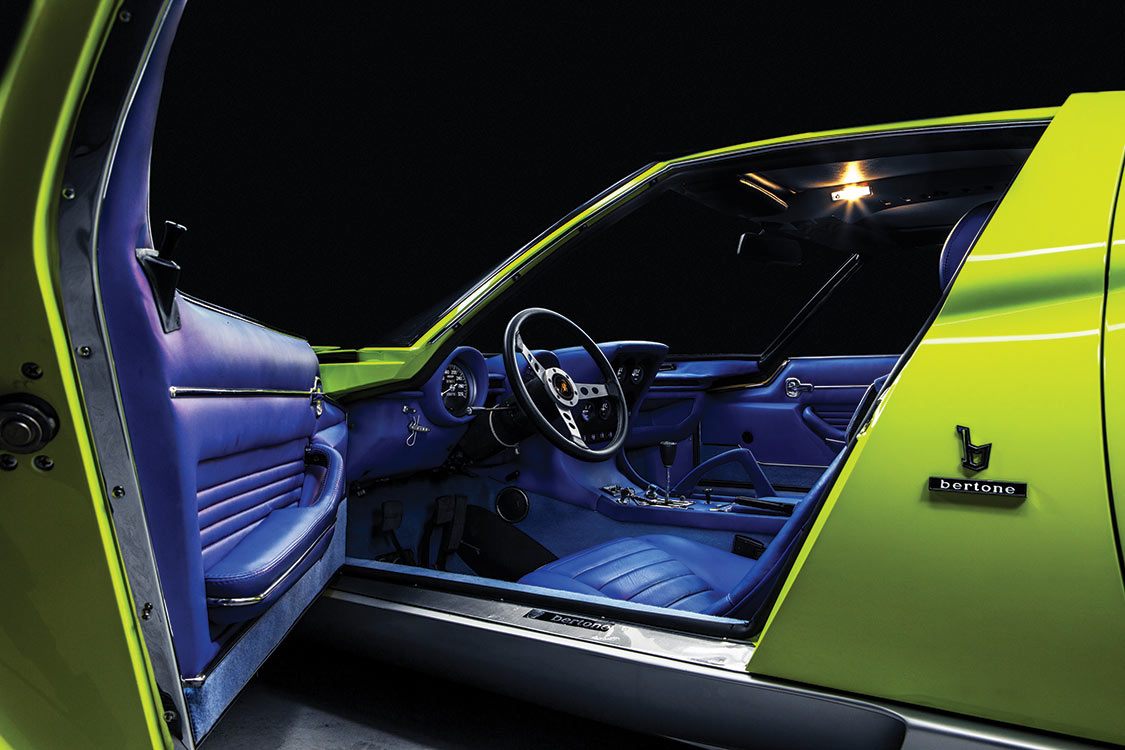 JIM SMART
.
May 20, 2022
.
All Feature Vehicles
JIM SMART
.
May 20, 2022
.
All Feature Vehicles

Lamborghini has long been a name associated with some of the most exotic sports cars in the world, and it’s often been said Lamborghini gave birth to the supercar.
Did you know the car is an integral part of Audi and the Volkswagen Group of today? It wasn’t always this way, though. More than 50 years ago, Ferruccio Elio Arturo Lamborghini was a successful Italian industrialist who was also a mechanical engineer specializing in farm implements, small utilitarian city automobiles, fast cars, heating and air conditioning systems and a host of other innovations that would thrive in Italy’s bustling post World War II economy.
“It’s often been said That Lamborghini gave Birth to the supercar.”

As Lamborghini amassed wealth during the ’50s with his innovations, he was in a better position to pursue his true vision, high-performance cars. Lamborghini had a passion for racing, and he possessed quite a collection of fast cars consisting of Alfa Romeos, Mercedes Benzes, Jaguars, Maseratis and Lancias. There came a moment when he concluded most exotic high performance competition cars were too harsh for the street and he decided that there needed to be something more user friendly.
Necessity is the mother of invention, and so it was that Lamborghini saw a market for a race car turned street car with real street amenities and comfort, primarily based on his frustrating experiences with Ferrari. He didn’t like the chronic maintenance nature of race cars sold as street cars. There was very little time to enjoy automotive exotica like Ferrari because they were always laid up in the shop. When Lamborghini took his frustrations to Enzo Ferrari, he was swiftly dismissed by an imposing ego and condescension, which rocketed his hot Italian blood to a constructive boil. He was going to find a way to do it better than Ferrari, and he did.

Lamborghini took his troublesome Ferrari 250GT and worked with its driveline himself to get a better understanding of its shortcomings and how to correct them. As he worked with his GT, he became more and more aware of his own abilities and wondered how he could build a better exotic Italian personal luxury touring car of his own. His belief: Don’t get mad; do it better. So he looked to his own resources and set about developing a plan to build a better exotic personal luxury sports car, and Automobili Lamborghini of Sant’Agata Bolognese was born.
Lamborghini’s plan was to design and build a hot supercar for the street that could take on any road course in the world, yet also be comfortable transportation for those who didn’t have to ask “how much?” Lamborghini understood he could build a great road car that was better than Ferrari and could both compete and be a pleasure to drive on a weekend getaway. He also understood he could make a boatload of money doing it.
In 1965, Lamborghini took its P400 prototype race car and developed it for street use. At the time, the P400 had a monocoque platform with a screaming transverse 3.9L V-12 engine/transmission package and a very sophisticated steering, suspension and braking system when it was rolled out at the Turin Salon in 1965. However, Lamborghini didn’t have a body to sell with the platform. Running out of precious time, Lamborghini looked to Bertone, in particular stylist Marcello Gandini, to give birth to a slippery body to fit over the P400 platform. When Lamborghini unveiled the P400, known as the Miura (meaning “fighting bulls”), at the Geneva Auto Show in 1966, the press and public were overwhelmed. It was the beginning of an improvement-oriented Mirua production run that ran through 1971 with a total of 763 built.

Before you are two impeccable examples of what Lamborghini was building more than four decades ago. In no way were these assembly line automobiles, but instead each was hand-built one at a time as an exotic sport touring luxury car for the very affluent. Bobileff Motorcar Company in San Diego has methodically applied its talents to #3919, a ’68 Miura P400 in striking Pistachio Verde as well as Jerry Burbaker’s ’71 Miura P400S with SV features, #4832 in red and gold.
. Horsepower Torque Compression
Total: 763
We use cookies to enhance your browsing experience, serve personalized ads or content, and analyze our traffic. By clicking "Accept All", you consent to our use of cookies. Visit our Cookie Policy for more info.
Notifications
Share Link